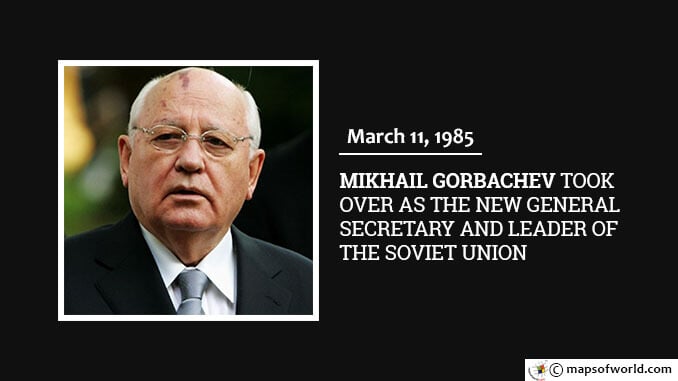On March 11, 1985, the 54-year-old Gorbachev took over the post following the death of Konstantin Chernenko. Under the leadership of Gorbachev, the Soviet society and foreign policy underwent a radical transformation over the next six years. His reign saw several positive measures being implemented. He relaxed political oppression. He also pushed for the reform of the economic system of the Soviet Union, which by that time was in a mess. However, an important part of his rule was his drive to improve relations with the United States. In 1987, Gorbachev and Ronald Reagan signed the Intermediate-Range Nuclear Forces Treaty. This paved the way for a decrease in the number of mid-range missiles that each nation kept in Europe. However, these measures could not help the Soviet Union from breaking up. The late 1980s posed several challenges for the Communist nation such as a weakening economy and many Soviet republics clamoring for independence. At the time, many Eastern European satellites, which were strong supporters of the Soviet system, were also breaking free. Finally, on December 1, 1991, Gorbachev resigned and the Soviet Union You may also like : March 11, 1941 – The Lend-Lease Act is Signed into Law
March 11, 1985 – Mikhail Gorbachev took over as the new general secretary and leader of the Soviet Union
On March 11, 1985, the 54-year-old Gorbachev took over the post following the death of Konstantin Chernenko. Under the leadership of Gorbachev, the Soviet society and foreign policy underwent a…
